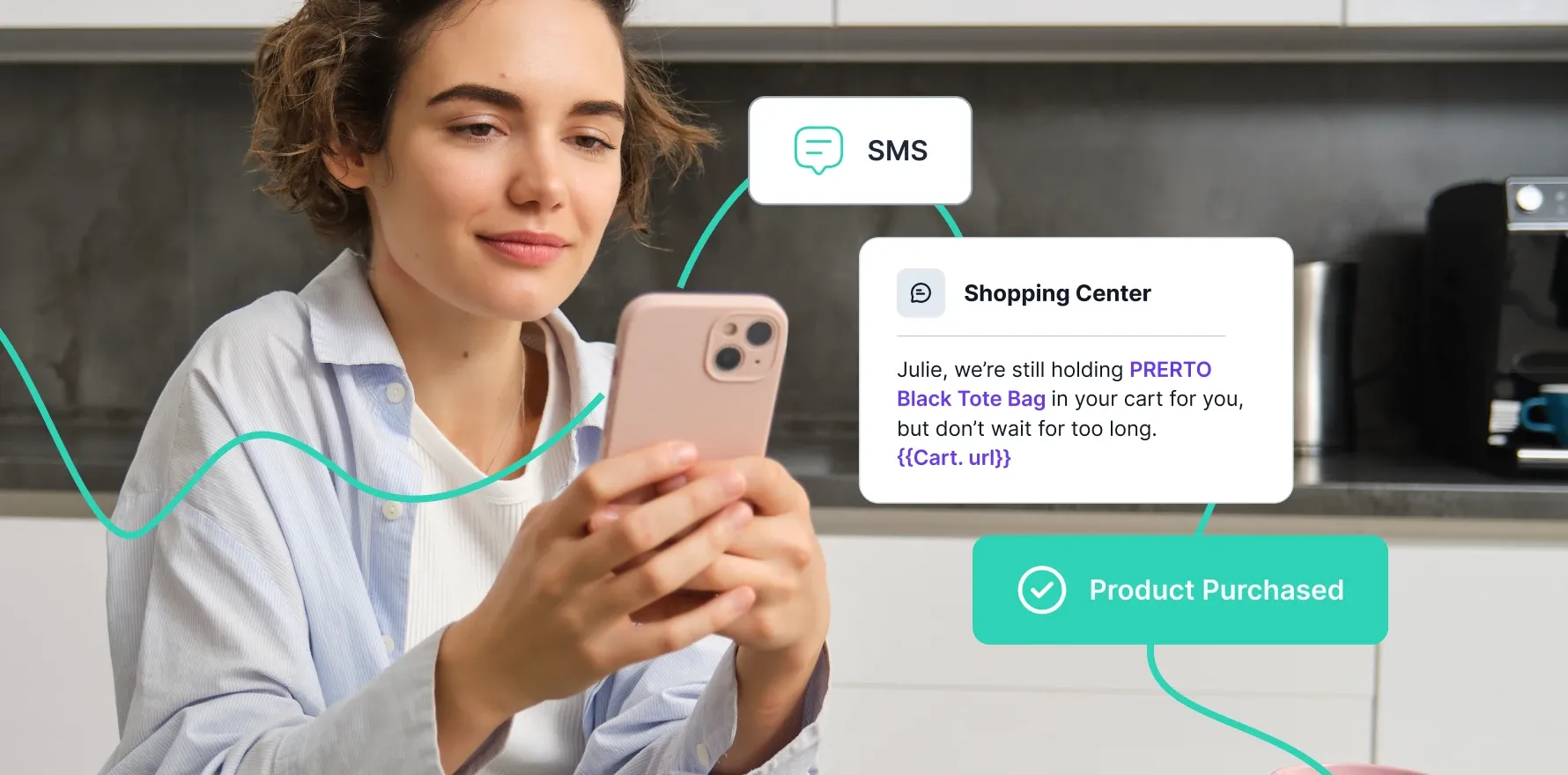SMS marketing is a simple yet effective marketing channel. While for email marketing, the average open rate hovers around 28-33%, this number goes up to 99% for text messages. Not just that, customers read a staggering 97% of texts within 15 minutes of receiving them. Naturally, SMS marketing has enabled brands around the world to generate growth while keeping marketing spends in check. But remember this – navigating SMS marketing correctly is hard work. One mistake and you won’t just drive your customers away, you might even land into legal trouble. Read on to find out how to do SMS marketing right in the times of consent and ad clutter.
Simple yet powerful SMS strategies continue to drive conversion for brands, but SMS etiquette is the one thing you cannot do without. You want to be relevant and helpful, not an everyday annoyance in your customer’s SMS inbox.
Today, let’s explore eight sms marketing best practices that you need to add to your arsenal for high ROI SMS marketing campaigns.
Best Practice 1: Follow consent principles
Depending on your jurisdiction, ensure that you follow all the laws that prohibit collecting contact information and communicating with customers without their explicit consent. If you want to use a customer’s contact number for marketing purposes, you should only after they opt in with explicit permission.
This means no pre-checked boxes to allow marketing communication. Further, no business can scour mobile numbers from customer invoices to send unsolicited marketing SMS.
If a customer has opted-in from marketing text messages, they should have a smooth and voluntary process to opt-out as well.
Include a statement in each marketing text message underlining how a customer can opt out. This could be a link to deactivate SMS notifications or the option to reply with in one word that unsubscribes them from future marketing texts.
Provide your customer the option to opt-out each time to give them a sense of control. This will lead them to appreciate the control they wield over their SMS inbox, and subsequently, appreciate your brand too.
Best Practice 2: Establish the sender in each SMS
With text message copy, you have just a few words to communicate your offer and generate attention and desire in your customers.
Due to this simple lack of space, brands often resort to including the business name in a non-obvious manner. An example is mentioning the brand name within the CTA URL. If the customer does not read the message thoroughly, they might miss the brand name and delete the message immediately.
Imagine this – the total number of SMS circulated in 2020 was over 2.2 trillion. This means that if a customer cannot immediately recognize who the message is from, you will have lost their attention because there are hundreds of other messages vying for their time.
In addition, sending text messages from unknown numbers is an invitation to your customer to mark your communication as spam. Make sure your brand name is in the first few lines of the SMS, so that it appears in the message preview.
Lastly, according to marketing communication laws, there is a high likelihood that you are required to identify your business name in all marketing communication. Therefore, clearly identify the brand name in each SMS right at the beginning.
Best Practice 3: Push maximum value in minimum words
Each SMS from your business should have some value – establishing trust, giving incentives, providing information, among others. Executing SMS campaigns with vague details that are not personalized for your target audience will not lead to conversions.
Always address the consumer by name and greet them. While brevity is critical, so is personalization. A customer is more likely to read your SMS if it addresses them directly and succinctly gives them information that is specific to their needs.
Secondly, communicate the intent clearly. Creative copy is redundant if the customer is unsure about the purpose of the SMS. Use language that will resonate with the reader. Use abbreviations that make sense to your target audience.
Finally, make sure to proofread because customers may perceive an SMS with typos as a scam attempt.
Best Practice 4: Optimize for holiday season expectations
During the planning stages of your marketing campaigns, have a calendar in place highlighting the various holidays you want to focus on.
These will depend on your industry and the audience you serve. Plan SMS campaigns that target last-minute shoppers and base your SMS copy or incentives around the holiday theme for typical holiday months like December. Your SMS copy can also talk about freebies to mark the celebration.
A deep dive into holiday traditions can be of value here. Most brands do surface research to push their products during holidays. However, you can take it a step further by encapsulating the spirit of lesser-known traditions. Tie it to offers and upselling/cross-selling opportunities.
Going beyond the usual “Ho! Ho! Ho!” will surely impress your customers.
Best Practice 5: Identify the right time and frequency for your SMS
Use automation tools to time your messages correctly. Here are some timing and frequency situations to avoid sending:
- An OTP message way too late to complete a transaction or a sign-in way will immediately make your customer abandon the purchase journey
- Too many messages around festival days will ensure that they block your number
- Time-sensitive updates related to an ongoing order, such as the product being out of stock, when received days after the order has already been placed, will encourage the customer to switch brands
Other than avoiding these practices, a business should follow general strategies related to all marketing communication. For instance, any text messages sent during the hours your customer sleeps will be buried under other notifications when they wake up, so time your messages accordingly.
Best Practice 6: Formulate engaging calls to action
Give the customer the means to take action through specific directions or instructions mentioned in the SMS.
Asking them to log on to your website or mentioning other vague steps will not suffice. A simple CTA communicating the exact benefit along with the actual action – preferably a single click – will encourage your customers not to ignore your SMS.
The placement of the CTA is also essential. If your SMS content is long, make sure to highlight the CTA and place it somewhere in the beginning so that the recipient doesn’t have to scroll too much to find it.
Best Practice 7: Measure what works
You won’t be able to track the success of your campaign without robust measuring tools. Deploy an AI-centric tech stack (codeless options are possible too!) to track the open and response rates in real-time for your SMS campaigns.
Depending on the insights, prioritize accurate targeting and creative optimization in real-time.
You can also use SMS channels as a way of collecting more first-party data about your customers, which you can then use to drive your other campaigns. SMS marketing can be your gateway to insight- and data-led marketing campaigns.
Best Practice 8: Engage your customers in a two-way conversation
When you want to communicate a sense of urgency, can you make the necessary action as easy as a reply from the customer?
Real-time, two-way communication can be the quickest way to convert prospective customers with a simple SMS.
They do not have to open an app, website or email, link, or form to take the next step. The CTA is a simple reply to the SMS itself. In such cases, you will be giving them an incentive to take swift action.
When customers feel they are talking to a human and not a bot, they are more likely to engage. Convenience is the most remarkable feature of a sound shopping journey. Enabling two-way communication wherever possible through SMS will help you achieve this.
Don’t just build engagement; build relationships
SMS marketing campaigns are budget-friendly and the most accessible form of marketing communication. Optimizing them with best practices and the right execution stack will boost your SMS marketing ROI in no time.
If you feel that your SMS marketing campaigns are on the verge of dying out, book a demo with us, and we will revive them for you!
You may also like
Essential resources for your success

























































